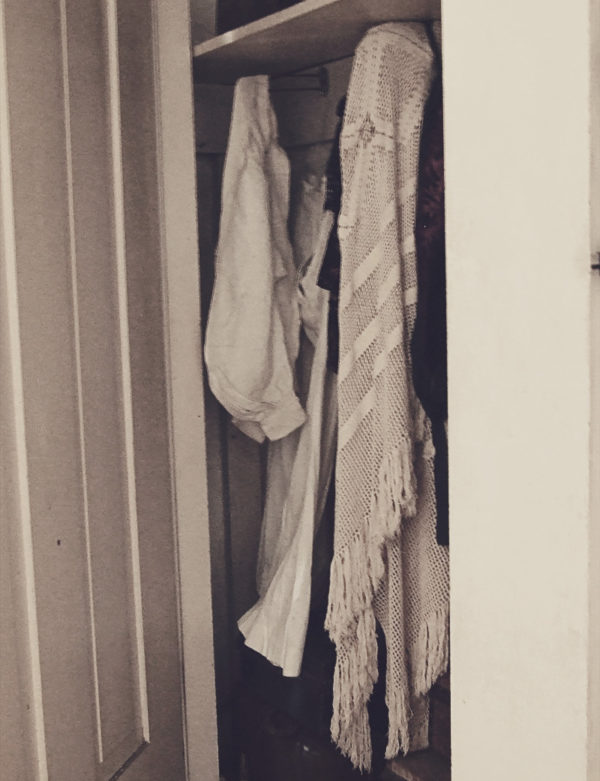Among the many things that go hand in hand with the annual spring housecleaning is the putting away of the winter garments. Few duties at this time of the year are more essential than this, properly done. When the children have discarded the heavy winter flannels, and they have been washed and thoroughly aired for the last time for this season, remove every article of clothing from your closets, wardrobes, trunks and halls, or other places where you intend to store the winter garments until another autumn.
The closet, wardrobe or trunk should never have any paper on its walls, or a carpet on the floor. If a closet, every corner should be scalded, and next thoroughly saturated with spirits of turpentine. Take out every movable shelf and not merely wash, but scald them thoroughly, taking care to clean and wash the cleats on which they rest. If the walls of the closet are cracked or broken, fill them with plaster of paris moistened with cold water. If there are cracks in the floor or between the baseboards and the walls be careful to fill them up tight with putty or tar.
In case your house or closet is infested with the carpet bug or moth, corrosive sublimate should be used. It is poisonous, but if care is used in preparing it no harm will result. The best way to prepare it is to build a fire out of doors and hang a pail of boiling water over the fire, placing one ounce of corrosive sublimate in the pail for each gallon of water. Cover the pail quickly and get away from the pail, so as not to inhale the fumes. After boiling for awhile allow the solution to get cold and then apply it freely with a brush, sponge or rag to every board in your closet, the floor included, and let it soak into the cracks and crevices. Also wet every crack with benzine to which carbolic acid has been added in the same proportion as the corrosive sublimate was added to the boiling water.
Moths have a dislike to newspapers, and it is well to lay them on the shelves and in the bottom of the drawers. Packing boxes and trunks should be carefully lined with them, care being taken that they are pasted air tight, or you may provide by leaving them loose, a place for some insect to nest in the winter where you little suspect.
Having everything in readiness to commence your work select a sunny day. Put every garment that you are going to pack out doors on the clothes line, and after the pockets have been turned inside out, the garments whipped free from dust, let them hang for two or three hours in the sun. If a garment needs sponging, use water to which turpentine has been added.
Dress skirts will wrinkle less if folded right side out. Dresses should be carefully folded in newspapers, each one separately, and placed in the drawers or trunks with a good sprinkling of fresh cloves between them. The newspapers must be pasted securely to prevent the moth or any of his tribe from entering. In folding men’s garments care should be exercised. The sleeves should be filled with newspapers folded flat, and a small handful of cloves should be put in each pocket. Be careful and not fold the coats and trousers so that when they are removed in the fall they will have such wrinkles that it will exhaust all your patience in pressing them out. A little extra care and time now will save you bother and time in the fall.
If you do not wish to use newspapers, ask your grocer for a dozen or two of his largest sized manilla bags, such as one-eighth of a barrel of flour comes in. These are, of course, much easier to use than newspapers, as you do not have to paste but one small end. The garments can be carefully slipped in the bags which can be used a great many seasons, only the small end being broken when the garments are removed.
The use of tarred paper is very disagreeable to most people, and clothes packed with it retain the repulsive odor for a long time after they are removed from contact with it or with the ill-smelling tablets sometimes used. Newspapers, paper bags and cloves are just as beneficial in keeping the moths away as are the obnoxious odors caused by such agencies.
When ready to pack winter millinery, visit a clothing store and obtain some strong and perfect bandboxes and, after placing your bonnets and hats in them, seal them air tight by pasting strips of paper about the cover. Carpet bugs delight in feasting on birds’ wings and millinery ornaments, and it is well to secure the articles.
Fasten muff and fur boxes in the same way. Furs should be put away as early in the season as they are discarded and before the common moth miller is seen. Delay until other garments are ready to pack away is what causes many sets of furs to be found all eaten up when they are unpacked, as the moths get in them very early in the spring and are not seen when they are put away.
Bed blankets should be carefully washed and dried and cloves distributed plentifully among the folds when put away.
Moths prefer garments that are filled with dust, and for this reason every housekeeper should use extra care in thoroughly brushing everything and in throwing away all discarded articles which would otherwise afford nests for the pests.
These directions carefully followed and next fall when you remove your garments you will find they are in apple pie order, unless I am mistaken.
-O. L. Stone.

